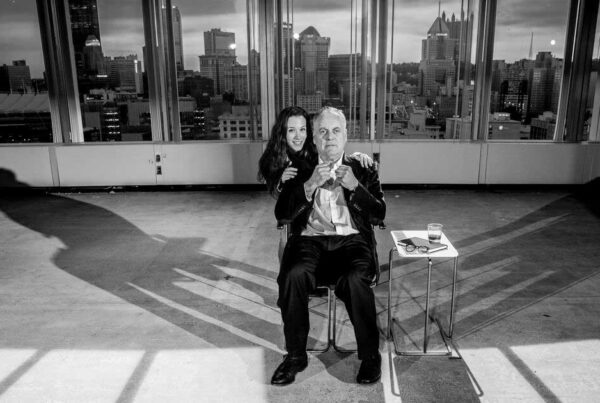
Pittsburgh City Paper – A modernized production conveys both freshness and Ibsen’s original symbolism.
The beauty of minimalism is that it can make the abstract more tangible. Quantum Theatre’s modernization of the standard Ibsen mise-en-scène allows its production of The Master Builder to convey the freshness and symbolism of this 1893 play, which the original audiences must have felt.
Scenic designer Tony Ferrieri took an empty floor at the top of a North Side office tower the size of a city block, carefully placing only the most essential objects on stage — kind of like an IKEA Zen garden — and rooted this concrete-and-glass space in the late 1950s.
John Shepard, as Solness, the middle-aged Master Builder, is such a powerful actor that he could carry the show on his own. But instead he adapts his performance to the other actors like warm putty joining stones of various shapes and sizes, so that they interact in the most natural manner.
Hayley Nielsen has the difficult task of playing the predatory ingénue Hilda, and she succeeds in making both the coquettish and symbolic parts of her character believable, when a lesser actress might have played it safe and gone for one or the other.
Director Martin Giles has the performers making some esoteric stage crosses — as if they are tracing a mystical design underneath them — often ending up on marks stretched so far apart that it adds another dimension of drama.
In the space’s thrust arrangement, the seating is raised above the stage, which allows the lights hanging from the low ceiling to shine directly in your eyes, and they are hot. In fact, members of the audience disrobed during the show like a slow game of strip poker.
The two intermissions (usually welcome) were actually intrusive, like awkward cuts to commercial during an intense football game. They also seemed to confuse the audience, which had no idea when an act was ending, or even when to clap.
But these were small distractions in an otherwise brilliant evocation of a masterful work by one of the first modern playwrights, where the minimalist style helped bring the abstract qualities of this play to a profound sense of reality.




